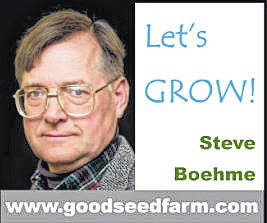
Counting sheep to relax yourself isn’t nearly as effective as plowing your way through the American Nursery & Landscape Association (ANLA) American Standard for Nursery Stock, a 129-page book that explains in detail how woody plants should be priced and graded. As dull as this book may be, it’s full of charts and diagrams detailing exactly how to classify each type of woody plant and then grade it. Understanding these standards is essential for nurserymen who buy and sell trees sight-unseen.
We often get calls from people who are shopping for nursery trees over the telephone, and after asking the price they ask “how tall is it?” It’s an obvious question, but the answer can be very misleading. That’s because most types of trees are not bought, sold or priced by their height. Nursery professionals classify tree size by trunk caliper (diameter of the trunk six inches above the ground) and container size as well as height, and which standard applies will depend on the type of tree. They also refer to trees by their botanical (Latin) names, since common names aren’t specific enough to tell what kind of pedigree a tree has.
The best way to compare trees is to physically see them. There are so many variables that affect price, it’s impossible for the average consumer to judge and compare trees over the telephone.
For example, let’s look at the popular ornamental pear tree “Cleveland Select”. This tree is often sold “container-grown”, in which case it would be priced by pot size. However, a five-gallon container-grown pear tree could range from a ½” caliper to over one inch (twice the size). It could be a “whip” with no branches at all and still be eight feet tall, or a nicely branched “lollipop” shape only six feet tall. A field-dug “balled & burlapped” pear tree could have a nice thick trunk and well-branched crown, but too small a root ball to survive transplanting.
There’s also the question of tree structure. Young trees must be carefully pruned to remedy structural defects and encourage healthy, shapely growth habits. Nurseries vary widely in how carefully they prune, and whether they control tree diseases.
The complex ANLA standards allow nurseries to classify trees by a uniform and industry-wide grading system, so long as nurseries are honest about judging their own product. Over the years we’ve learned that it’s best for us to physically see and select each tree we buy, rather than depend on someone’s description. We literally “skim the cream” from large nurseries by selecting the best trees from rows of hundreds or even thousands, picking only the best examples. We would never try to do this by phone.
Organizations like the ANLA are very helpful in setting industry standards. Written bids and specifications depend on well-respected guidelines to establish a “level; playing field” for competitive bidding. For the homeowner this is way too much detail, but it’s important to understand that simply comparing the height or container size won’t tell you much about tree quality. No two trees are alike, and getting expert advice in person from a trusted nurseryman is the best way to get your money’s worth.
Steve Boehme is a landscape designer/installer specializing in landscape “makeovers”. “Let’s Grow” is published weekly; column archives are online at www.goodseedfarm.com. For more information call GoodSeed Farm Landscapes at (937) 587-7021.


